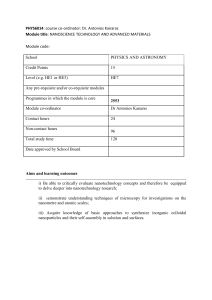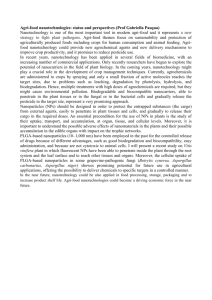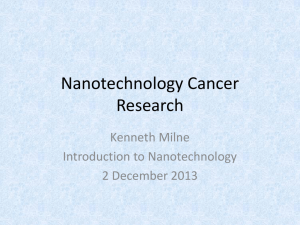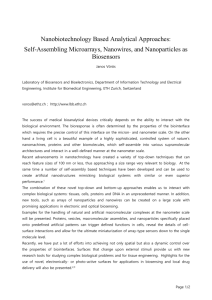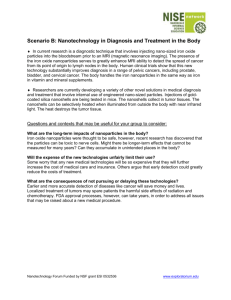File
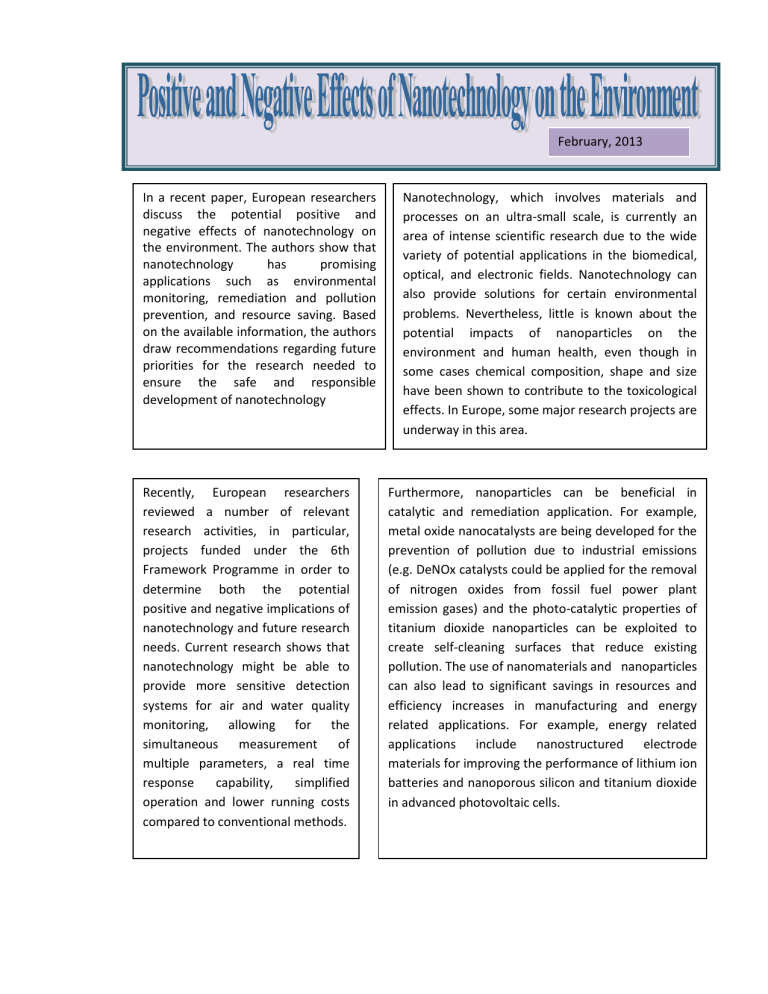
February, 2013
In a recent paper, European researchers discuss the potential positive and negative effects of nanotechnology on the environment. The authors show that nanotechnology has promising applications such as environmental monitoring, remediation and pollution prevention, and resource saving. Based on the available information, the authors draw recommendations regarding future priorities for the research needed to ensure the safe and responsible development of nanotechnology
Nanotechnology, which involves materials and processes on an ultra-small scale, is currently an area of intense scientific research due to the wide variety of potential applications in the biomedical, optical, and electronic fields. Nanotechnology can also provide solutions for certain environmental problems. Nevertheless, little is known about the potential impacts of nanoparticles on the environment and human health, even though in some cases chemical composition, shape and size have been shown to contribute to the toxicological effects. In Europe, some major research projects are underway in this area.
Recently, European researchers reviewed a number of relevant research activities, in particular, projects funded under the 6th
Framework Programme in order to determine both the potential positive and negative implications of nanotechnology and future research needs. Current research shows that nanotechnology might be able to provide more sensitive detection systems for air and water quality monitoring, allowing for the simultaneous measurement of multiple parameters, a real time response capability, simplified operation and lower running costs compared to conventional methods.
Furthermore, nanoparticles can be beneficial in catalytic and remediation application. For example, metal oxide nanocatalysts are being developed for the prevention of pollution due to industrial emissions
(e.g. DeNOx catalysts could be applied for the removal of nitrogen oxides from fossil fuel power plant emission gases) and the photo-catalytic properties of titanium dioxide nanoparticles can be exploited to create self-cleaning surfaces that reduce existing pollution. The use of nanomaterials and nanoparticles can also lead to significant savings in resources and efficiency increases in manufacturing and energy related applications. For example, energy related applications include nanostructured electrode materials for improving the performance of lithium ion batteries and nanoporous silicon and titanium dioxide in advanced photovoltaic cells.
On the other hand, it is recommended taking the following aspects into consideration:
A major concern regarding nanoparticles is that they might not be detectable after release into the environment, which in turn can create difficulties if remediation is needed. Therefore, analysis methods need to be developed to detect nanoparticles in the environment that accurately determine the shape and surface area of the particles (two of the factors that define their toxic properties).
More information is needed regarding the structure-function relationships and in relating surface area and chemistry to functionality and toxicity.
Full risk assessments should be performed on new nanomaterials that present a real risk of exposure during manufacture or use. Such assessments should take into consideration the toxicological hazard, the probability of exposure and the environmental and biological fate, transport, persistence, transformation into the finished product and recycling.
Life cycle analysis will be a useful tool for assessing the true environmental impacts.
When the use of scarce material is inevitable for the elaboration of the nanoparticles, an effective strategy for recycling and recovery is necessary.
This document is prepared by Steps – The Way To Eutopia Society to raise awareness among people.
Steps –The way to Eutopia Society (
এক মুঠো মাটিকেও পৃথিবী মনে করি
)
(S/1L/92145 of 2012-2013)
16, Napit Para Road. Rajpur, P.O. - Rajpur, DIST. -24 PGS. (S), Kolkata—700149
E-MAIL ID- steps_we@yahoo.com; Phone No. - 9830367510, 7278959145; Website: www.steps-we.org




